『互联网架构』软件架构-zuul微服务网关(中)(101)
咱们今天继续说springcloud的zuul。在最早我们是没有网关这个概念的,微服务搭建起来后,客户端就直接访问一个个微服务了,这些方式有很多的弊端,上次都说了,针对这些弊端,我们用一种什么样的方式去解决呢,那就是springcloud为我们整合一个框架zuul统一的微服务,在这些所有的后端的微服务中间加了一层网关层,网关层类似于设计模式里面的门面模式,就是靠这种门面进行隔离让后端的和请求端进行隔离解耦,互相之前不进行相互的影响,他们之前的影响都通过门面来进行解决。切记:网关调用后端的微服务,全部使用无状态请求。
源码:https://github.com/limingios/netFuture/tree/master/源码/『互联网架构』软件架构-zuul微服务网关(中)(101)/

(一)zuul聚合微服务
许多场景下,外部请求需要查询 zuul后端的多个微服务。举个例子,一个电影售票手机APP,在购票订单页上,既需要查询“电影微服务”获得电影相关信息,又需要查询“用户微服务”获得当前用户的信息。如果让手机端直接请求各个微服务(即使使用 zuul进行转发),那么网络开销、流量耗费、耗费时长可能都无法令我们满意。那么对于这种场景,可使用 zuul聚合微服务请求一一一手机 APP只需发送一个请求给 zuul,由 zuul请求用户微服务以及电影微服务,并组织好数据给手机 APP,使用这种方式,手机端只须发送一次请求即可,简化了客户端侧的开发;不仅如此,由于 zuul、用户微服务、电影微服务一般都在同一个局域网中,因此速度会非常快,效率会非常高。
-
实例代码
> 08-ms-gateway-zuul-aggregation
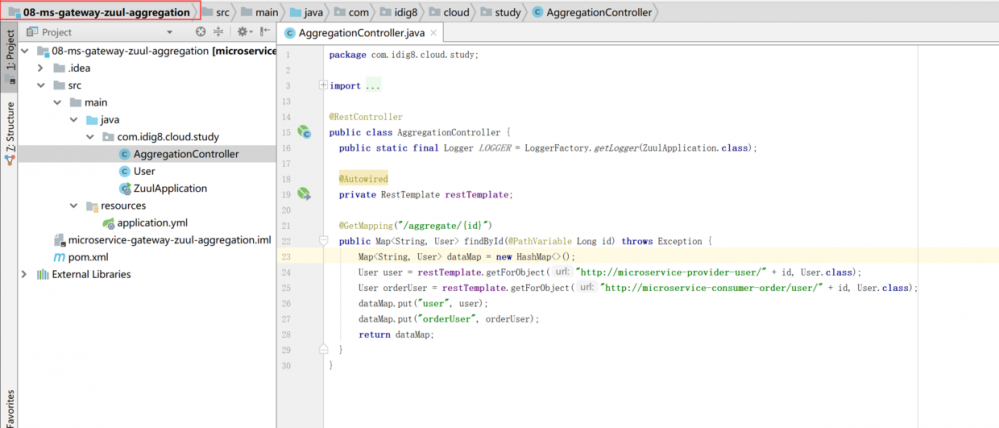
-
运行项目(需启动两个用户微服务和一个订单微服务,eureka-server,zuul的项目
1.08-ms-consumer-order-ribbon
2.08-ms-eureka-server
3.08-ms-gateway-zuul-aggregation
4.08-ms-provider-user
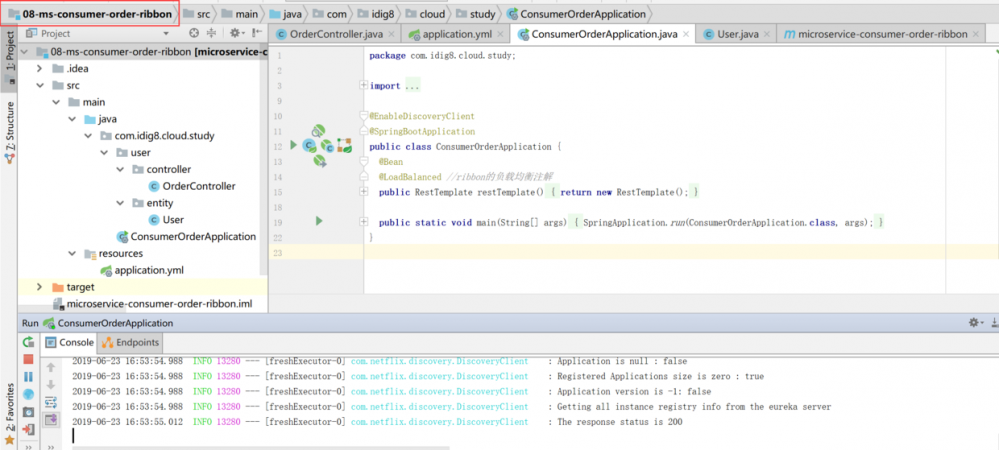
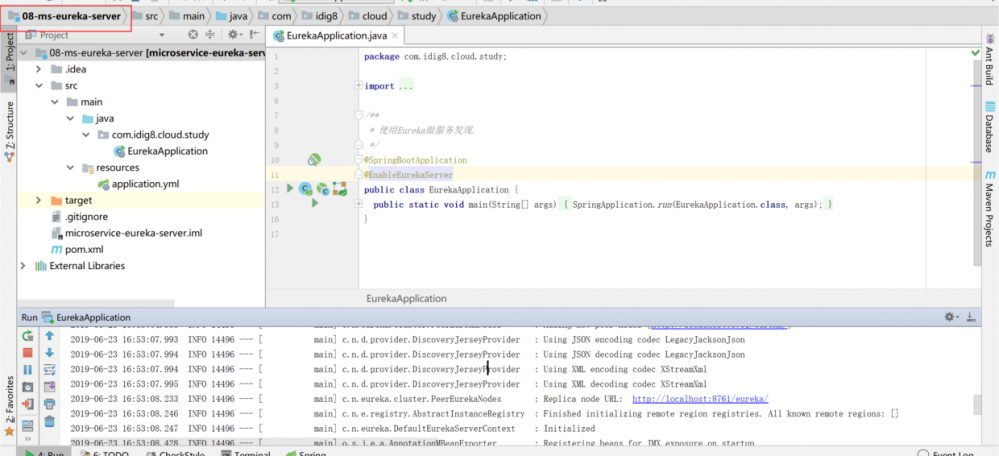
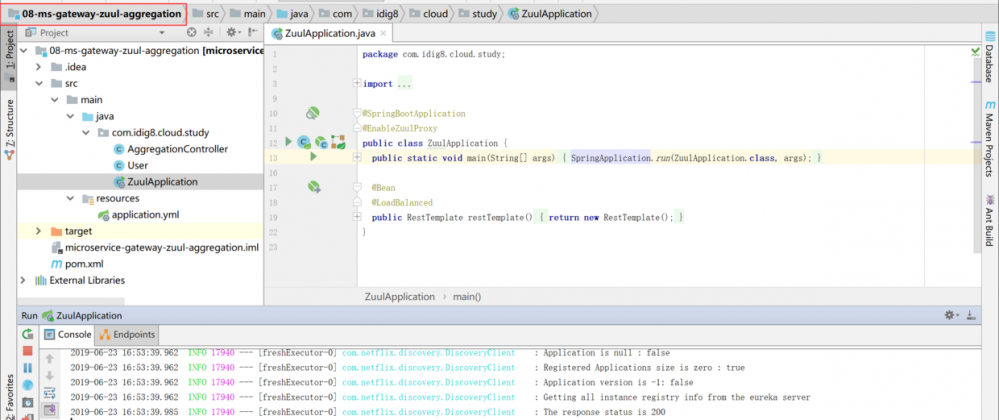

eureka里面有3个服务

-
聚合请求
> 其实就是访问一个zuul的一个controller,通过zuul中的controller来选择性的请求多个微服务。 http://127.0.0.1:8040/aggregate/1
一个请求order的微服务,一个请求user的微服务。
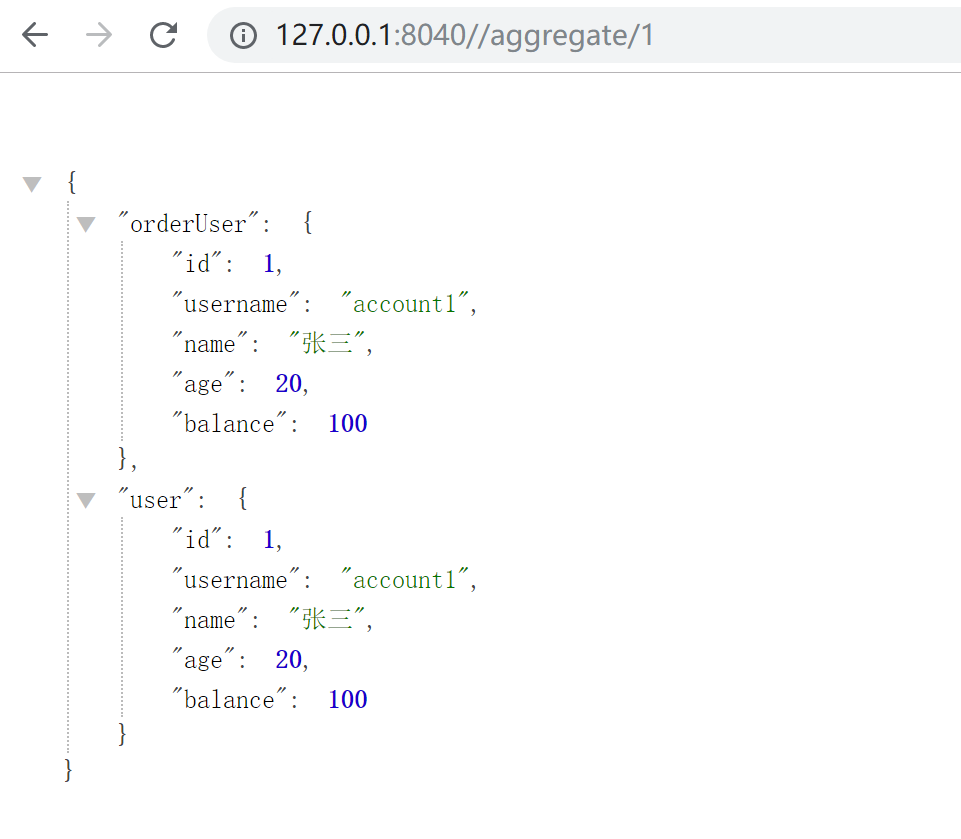
(二)zuul的路由配置
前文已经编写了一个简单的 zuul网关,并让该网关代理了所有注册到 Eureka server的微服务。但在现实中可能只想让 zuul代理部分微服务,又或者需要对 URL进行更加精确的控制。
- 源码
08-ms-gateway-zuul
- 路由忽略微服务
配置忽略指定微服务,只需在application.yml里加上如下配置
zuul: ignored-services: microservice-provider-user
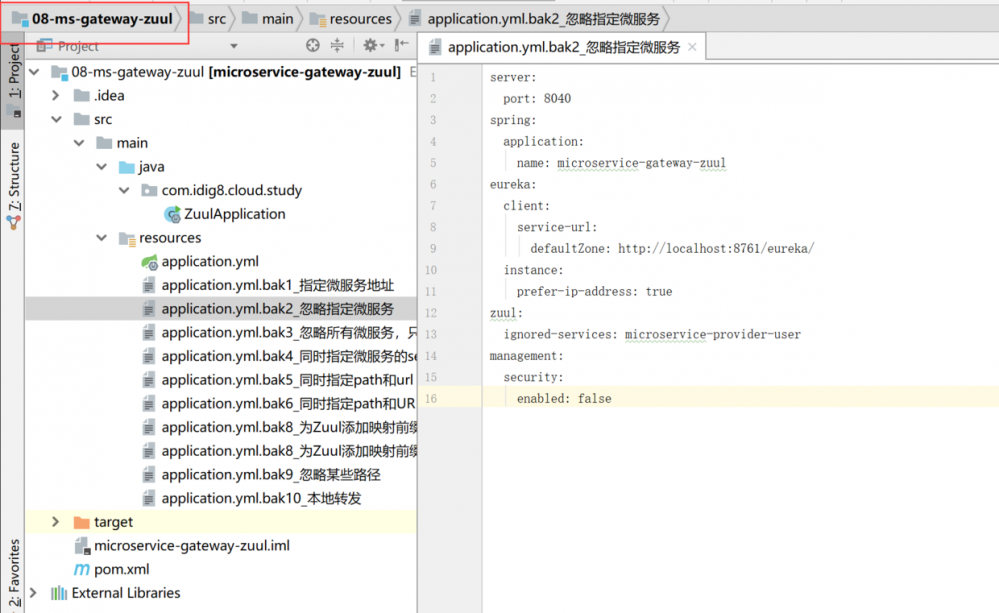
-
其他路由配置课查看项目示例的配置文件
> 指定微服务地址routes, user = microservice-provider-user
server:
port: 8040
spring:
application:
name: microservice-gateway-zuul
eureka:
client:
service-url:
defaultZone: http://localhost:8761/eureka/
instance:
prefer-ip-address: true
zuul:
routes:
microservice-provider-user: /user/**
management:
security:
enabled: false
忽略指定微服务ignored-services
server:
port: 8040
spring:
application:
name: microservice-gateway-zuul
eureka:
client:
service-url:
defaultZone: http://localhost:8761/eureka/
instance:
prefer-ip-address: true
zuul:
ignored-services: microservice-provider-user
management:
security:
enabled: false
忽略所有微服务,只路由指定的微服务
server:
port: 8040
spring:
application:
name: microservice-gateway-zuul
eureka:
client:
service-url:
defaultZone: http://localhost:8761/eureka/
instance:
prefer-ip-address: true
zuul:
ignored-services: '*' # 使用'*'可忽略所有微服务
routes:
microservice-provider-user: /user/**
management:
security:
enabled: false
同时指定微服务的serviceId和对应路径
server:
port: 8040
spring:
application:
name: microservice-gateway-zuul
eureka:
client:
service-url:
defaultZone: http://localhost:8761/eureka/
instance:
prefer-ip-address: true
zuul:
routes:
user-route: # 该配置方式中,user-route只是给路由一个名称,可以任意起名。
service-id: microservice-provider-user
path: /user/** # service-id对应的路径
management:
security:
enabled: false
同时指定path和url
server:
port: 8040
spring:
application:
name: microservice-gateway-zuul
eureka:
client:
service-url:
defaultZone: http://localhost:8761/eureka/
instance:
prefer-ip-address: true
zuul:
routes:
user-route: # 该配置方式中,user-route只是给路由一个名称,可以任意起名。
url: http://localhost:8000/ # 指定的url
path: /user/** # url对应的路径。 这样就可以将/user/**映射到http://localhost:8000/**,这种方式访问不会作为HystrixCommand执行,也不能使用ribbon来负载多个URL,例6可以解决该问题
management:
security:
enabled: false
强烈建议使用下面的配置,同时指定path和URL,并且不破坏Zuul的Hystrix、Ribbon特性。
server:
port: 8040
spring:
application:
name: microservice-gateway-zuul
eureka:
client:
service-url:
defaultZone: http://localhost:8761/eureka/
instance:
prefer-ip-address: true
zuul:
routes:
user-route:
path: /user/**
service-id: microservice-provider-user
ribbon:
eureka:
enabled: false # 禁用掉ribbon的eureka使用
microservice-provider-user:
ribbon:
listOfServers: localhost:8000,localhost:8001
management:
security:
enabled: false
为Zuul添加映射前缀1
server:
port: 8040
spring:
application:
name: microservice-gateway-zuul
eureka:
client:
service-url:
defaultZone: http://localhost:8761/eureka/
instance:
prefer-ip-address: true
zuul:
prefix: /api
strip-prefix: false
routes:
microservice-provider-user: /user/**
logging:
level:
com.netflix: DEBUG
management:
security:
enabled: false
# 访问Zuul的/api/microservice-provider-user/1路径,请求将会被转发到microservice-provider-user的/api/1,可查看日志打印,有助于理解。
为Zuul添加映射前缀2
server:
port: 8040
spring:
application:
name: microservice-gateway-zuul
eureka:
client:
service-url:
defaultZone: http://localhost:8761/eureka/
instance:
prefer-ip-address: true
zuul:
routes:
microservice-provider-user:
path: /user/**
strip-prefix: false
logging:
level:
com.netflix: DEBUG
management:
security:
enabled: false
# 这样访问Zuul的/user/1路径,请求将会被转发到microservice-provider-user的/user/1,可查看日志打印,有助于理解。
忽略某些路径
server:
port: 8040
spring:
application:
name: microservice-gateway-zuul
eureka:
client:
service-url:
defaultZone: http://localhost:8761/eureka/
instance:
prefer-ip-address: true
zuul:
ignoredPatterns: /**/admin/** # 忽略所有包括/admin/的路径
routes:
microservice-provider-user: /user/**
management:
security:
enabled: false
忽略某些路径
server:
port: 8040
spring:
application:
name: microservice-gateway-zuul
eureka:
client:
service-url:
defaultZone: http://localhost:8761/eureka/
instance:
prefer-ip-address: true
zuul:
routes:
route-name:
path: /path-a/**
url: forward:/path-b
management:
security:
enabled: false
忽略某些路径
server:
port: 8040
spring:
application:
name: microservice-gateway-zuul
eureka:
client:
service-url:
defaultZone: http://localhost:8761/eureka/
instance:
prefer-ip-address: true
zuul:
routes:
route-name:
path: /path-a/**
url: forward:/path-b
management:
security:
enabled: false
其实上边的例子: https://cloud.spring.io/spring-cloud-static/Edgware.SR6/single/spring-cloud.html 都是从官网拆出来的,要看一手文档。其实我就是搬运工,加上了自己的理解。
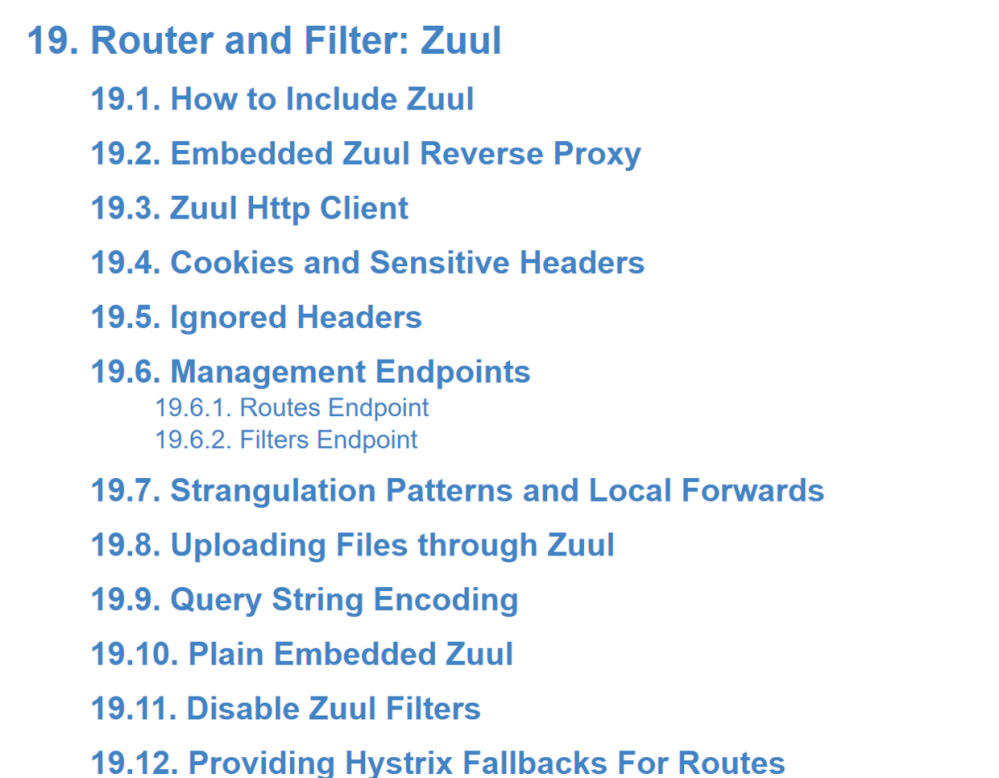
PS:这次说了zuul的路由和在zuul网关做聚合项目。下次继续说zuul的微网关设置。

百度未收录
>>原创文章,欢迎转载。转载请注明:转载自IT人故事会,谢谢!
>>原文链接地址:上一篇:已是最新文章
- 本文标签: 实例 provider Security ribbon https API HTML Logging springcloud git IDE App 百度 IOS Hystrix ip 数据 设计模式 开发 文章 bug 源码 UI 代码 Eureka http id 2019 spring 配置 IT人 软件 src Master 微服务 cat 组织 client IO zuul 互联网 GitHub list consumer Service Netflix NFV
- 版权声明: 本文为互联网转载文章,出处已在文章中说明(部分除外)。如果侵权,请联系本站长删除,谢谢。
- 本文海报: 生成海报一 生成海报二











![[HBLOG]公众号](https://www.liuhaihua.cn/img/qrcode_gzh.jpg)

